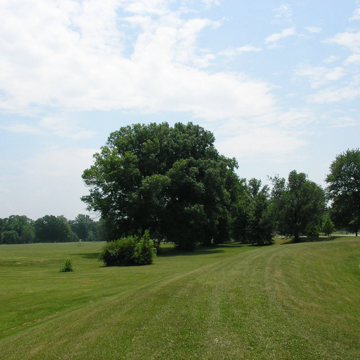Located at the west end of the city along the broad terrace of the Ohio River, the 180-acre Shawnee Park is one of Frederick Law Olmsted’s three large Louisville parks. Since much of the land for the proposed park was owned by investors, this was the last park to develop. The park features a curving drive with views of the river to the west, as well as a Great Lawn, promenades, beaches, and a boat ramp. The golf course north of the park was added in 1927. A 1937 flood altered the meadow landscape but these effects were later mitigated.
Between 1924 and 1954, Shawnee Park was legally restricted to whites; the smaller, 61-acre Chickasaw Park (1923) to the south was designated for use by African Americans. Following the park’s completion, subdivisions developed quickly in the area, with the neighborhood taking the name Shawnee.
References
Haragan, Patricia Dalton. The Olmsted Parks of Louisville. Lexington: University Press of Kentucky, 2014.
Rademacher Susan M. “A Living Legacy: Louisville’s Olmsted Landscapes.” In Louisville Guide, edited by Gregory A. Luhan, Dennis Domer, and David Mohney. New York: Princeton Architectural Press, 2004.

